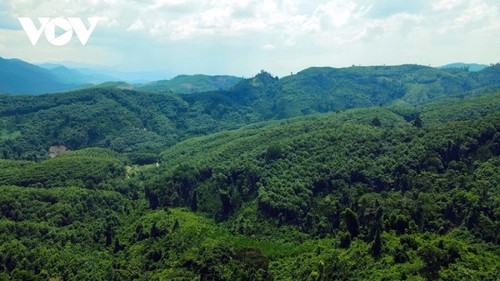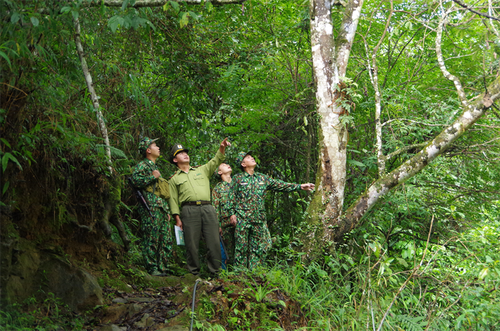 Quang Nam province has zoned areas for large tree afforestation. (photo: VOV) Quang Nam province has zoned areas for large tree afforestation. (photo: VOV) |
The State of Forests Report 2021 says Vietnam has more than 14.7 million hectares of forests. Vietnam’s strong commitment to fighting climate change has affected many policies on forest management and protection.
On July 12, 2022, the Prime Minister approved a sustainable forestry development program for the 2021-2025 period, which will maintain a national forest coverage of 42%. Many models of sustainable forest management and biodiversity conservation have been implemented by the government and international organizations, contributing to people's sustainable livelihoods and raising public awareness of forest management.
Vu Thanh Nam, Deputy Director of the Administration of Forestry, said: “Vietnam's forest coverage in 2021 was 42%, which compares favorable with other countries. The natural forest area is about 10.3 million hectares. Vietnam has implemented multiple measures to maintain its natural forest areas. Some localities have even increased their natural forests.”
In the northern mountains and central provinces, the area of forestry land is relatively large, accounting for more than 80% of the total land area. Forest economic development is a key priority that combines forest protection and people's livelihoods.
 Forest rangers patrol the Sin Suoi Ho forest in Lai Chau province. (Photo: kinhtemoitruong.vn) Forest rangers patrol the Sin Suoi Ho forest in Lai Chau province. (Photo: kinhtemoitruong.vn) |
In Song Kon commune, Dong Giang district, Quang Nam province, the local Co Tu people used to cut forest trees for income. In recent years a handicraft cooperative has organized people to weave bamboo products to earn extra income.
It’s one component of a 2.8 million USD project on sustainable forest management and biodiversity conservation implemented by the United States Agency for International Development (USAID) in Quang Nam’s mountain districts from 2020 to 2025. It has engaged people in wood and forest resources value chains, including bamboo, rattan, and medicinal herbs, afforestation, and large tree plantation.
Bling Blo of Song Kon commune, said: “We restrict access to the forests, and encourage people to work at home to earn higher incomes. We organize community-based tourism and eco-tourism, so we can sell woven products.”
Forest protection cannot be separated from community interests. In the 2016-2020 period, about 1,100 hamlets, villages, buffer zones, and protected areas received State support, with a total budget of 1.85 million USD. A number of international organizations are involved in improving the livelihoods of people in buffer zones, national parks, and conservation areas, which contributes to the protection of Vietnam's forests.